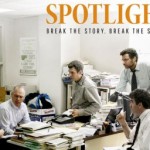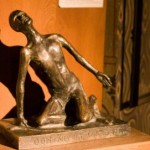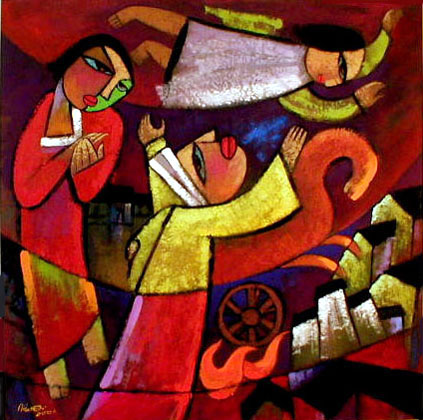 How do you store up treasures in heaven? What do you put in your purse that never wears out?
How do you store up treasures in heaven? What do you put in your purse that never wears out?
Familiar as this saying is, the action it urges is confusing. As a child I learned this meant a kind of heavenly bank of good deeds, a ledger that totted up alms given, kindnesses done, even (and most Yankee of all, perhaps) acts of self-denial, the ascetism of doing without.
But Jesus does not describe God as an accountant, or a score-keeper, in fact, as the opposite, so generous, God may be likened to an employer who overpays the end-of-the-day workers; so generous, forgiving all manner of errors and waywardness. God, according to Jesus, throws away the ledger of debts. And with it goes the ledger of assets, too.
The generosity Jesus urges is not an accumulative good-deed-doing, banked earnings to buy you a ticket to heaven, but a rush of self-forgetting, a joyfully celebrative generosity that empties its purse without worries of a harsh future.
And I do not live this way. I am hedged all round with the things one acquires to stave off fearful possibilities. A half dozen kinds of insurance, in case of illness, fire, theft, accidents in the car. Flu shots. Inoculations collected since childhood. There are dozens of ordinary fears for which I am prepared. The larger fears I handle differently, with a mix of hexes and prayers, denial and deep breathing.
Jesus shifts the image of generosity to the servant who is well-prepared for the wedding. Quite a different image, this. The servant does not forget the tiniest detail, yet is so focused on the celebration that is coming that he does not slack off into his own concerns, or become lost in petty details unrelated to the joy to come.
 So what do you store in your heavenly purse? What is that tresure, and how do we keep it for the future? We all know that other saying, You can’t take it with you.
So what do you store in your heavenly purse? What is that tresure, and how do we keep it for the future? We all know that other saying, You can’t take it with you.
The one thing we can take with us is our memories. Even when the process of memory fades, memories remain, floating disjointedly in those caught by dementia, and collectedly as well as randomly in the rest of us. Memories are things we cannot leave behind us, things etched into our being, shaping our responses, our will and choices, shaping direction and purpose in our lives. They can make a hell or a heaven of our lives. And perhaps of our eternity.
Memories of Jesus were the disciples’ treasure, the thing they polished in conversation with each other and poured into anyone who would listen to them. Their memories set them apart for the rest of their lives. And their expectation was, in death, these memories would lead them to eternity.
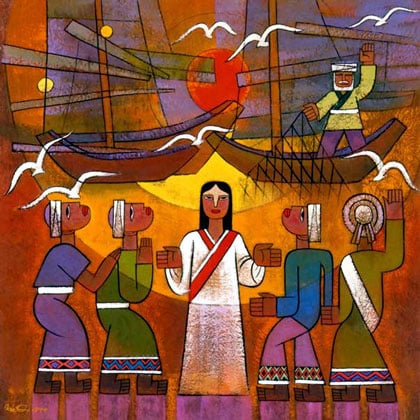 Their treasure was not simply a scrapbook of good times shared with Jesus. There were those, thank God. But they also remembered terrors, the final week, the fears, confusion, what happened in the night, their own flight, the hours on the cross, the agonizing days until Easter.
Their treasure was not simply a scrapbook of good times shared with Jesus. There were those, thank God. But they also remembered terrors, the final week, the fears, confusion, what happened in the night, their own flight, the hours on the cross, the agonizing days until Easter.
They suffered their own form of PTSD in all of this, and only with time learned how to transform that pain into a lasting treasure.
Their treasure, then, was not an itemization of their achievements or good deeds done, their sins, their delights, their families. Their treasure was the memory of the Christ-light in this world, which they had been privileged to witness. They told the tales of this with their own presence as part of the story.
And their stories can help us sort our own memories, seeking the Christ-light in the depth of experiences and profound feelings we have had.
Here, then, are a few of my treasures:
 Seeing Nelson Mandela released from prison – his incredible joy, his laughter, the little dance he did in Boston when he came, soon after. This joy, in a man imprisoned for so very long (27 years) he forgot how to tie shoes.
Seeing Nelson Mandela released from prison – his incredible joy, his laughter, the little dance he did in Boston when he came, soon after. This joy, in a man imprisoned for so very long (27 years) he forgot how to tie shoes.
Watching little 5 year old Ruby Bridges walk alone into the school she was integrating through a corridor of hate-howling white people, her small mouth moving in what we learned was a prayer of Jesus: Father, forgive them, for they know not what they do.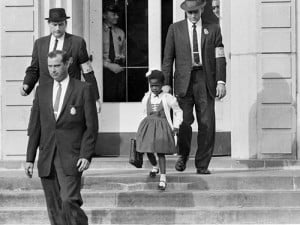
My own father, at a family wedding when I was barely 20, dashing in his black suit, asking a very homely and ill-dressed girl of 15 who was hugging the wall in her misery to dance – and he danced with her three times (no one else did). I heard him tell her, as I danced by, that she was beautiful. Later, when I asked him why he said that, he replied, She needed to hear it more than anyone else in the room.
Being welcomed at tables by dear friends who were willing to have me when I’d been badly broken in spirit, and had only my tears to share. They were willing to use words and hugs and food and presence to help heal me.
Hearing extraordinary sermons, by Joe Williamson, Barbara Brown Taylor, William Sloane Coffin, Walter Brueggeman, that raised up energy, hope, courage and faith in me.
The kindness of my cats, and the caress of nature and of those who’ve loved me, in the daily ins and outs of my being.
The treasure that overflows in the purse of heaven I keep, is not deeds I have done, but the myriad ways in which I have been able to witness the presence of God at work in this world.
_________________________________________________________
Illustrations:
1. Elijah is Taken Up to Heaven, 2001, He Qi, China. Vanderbilt Divinity School Library, Art in the Christian Tradition.
2. Knocking on Heaven’s Door, freestanding sculpture by Dunikowska, Kinga. Vanderbilt Divinity School Library, Art in the Christian Tradition.
3. Calling Disciples. He Qi, 2001, China. Vanderbilt Divinity School Library. Art in the Christian Tradition.
4. His Excellency Nelson Mandela, 2008, Johannesbury. Wikipedia image on Mandela’s page. .
4. Ruby Bridges Goes to School. 1960. Image on Wikipedia’s Ruby Bridges page.


